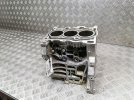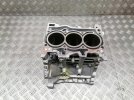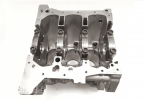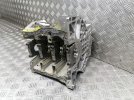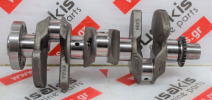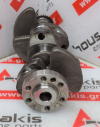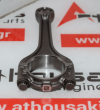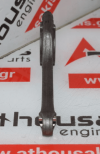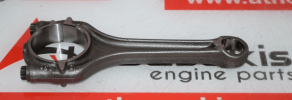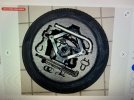More info. It seems the DLAC is one of the EA211 Evo TSI engines brought in around 2020. New features include:
the 1.0 TSI EVO three-cylinder petrol
engine is very interesting and now
operates in the economical Miller
combustion cycle. With this cycle, its
suction valves close already during
the suction piston stroke, which
reduces the effective compression
ratio, but the expansion ratio remains
unchanged. In this way, the engine
achieves greater efficiency. The engine
features its turbocharger with the
variable geometry of its distribution
vanes, which makes maximum torque
available even at lower engine speeds.
The functional surface of the cylinders
of both EVO petrol engines is
modified by a plasma-applied surface
layer that reduces friction to increase
the engine’s mechanical efficiency.
Depending on the number of cylinders and their power output, the powerplants incorporate various technological elements. The 130 PS (128 hp/96kW) 4-cylinder and the 3-cylinder variants use a combustion process based on the Miller cycle. This helps reduce fuel consumption, particularly at low RPMs, by closing the inlet valves and thus reducing throttle losses. This also enables a high compression ratio, which stands at 12.5:1 in the 4-cylinder and 11.5:1 in the 3-cylinder engine.
To prevent lower fresh gas volume to reduce power output and torque, they use a precise hydraulic system that enables the inlet and exhaust camshafts to be continuously adjusted.
The turbochargers feature variable geometry, which means they can withstand charge pressures up to 2.3 bar (33 psi) in the 130 PS (128 hp/96 kW) 4-cylinder or 2.8 bar (40 psi) in the smaller 3-cylinder.
To increase efficiency, the 1.5 TSI evo also uses the innovative Active Cylinder Management (ACT) technology. It shuts down the second and third cylinders at low to medium RPMs by deactivating injection, ignition, and the valve gear.
All TSI evo
engine variations use a highly efficient common rail injection system that runs at a maximum pressure of 350 bar (5,076 psi), delivering up to five injections per cycle. Raw emissions are kept at low levels, and a particulate filter mounted directly downstream of the engine retains almost all remaining harmful particles from the exhaust gas.
The compact units are also extremely light due to the use of lightweight materials like an aluminum crankcase. Thus, the 1.0-liter 3-cylinder only weighs 88 kg (194 lbs).




